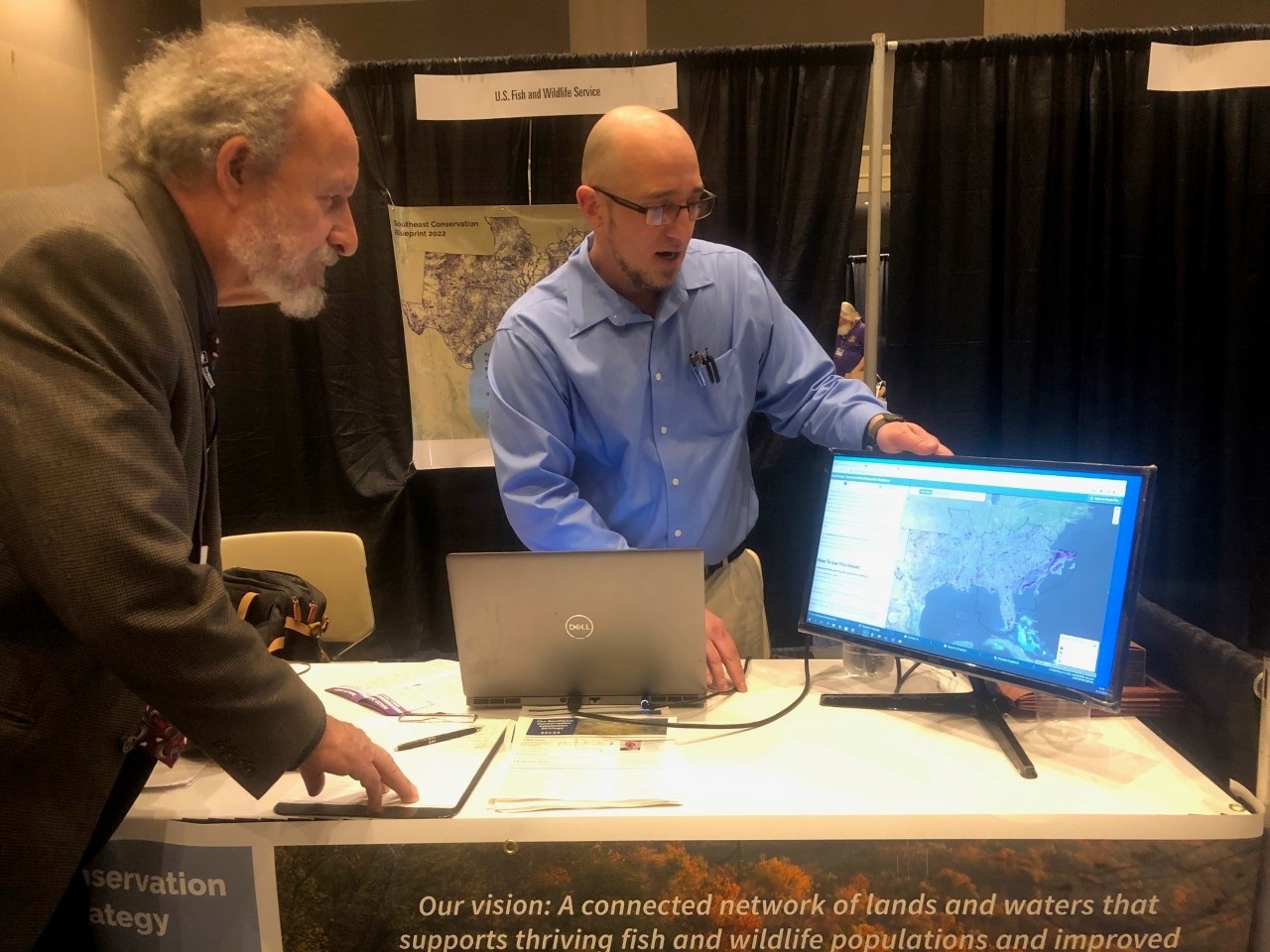Engaging private landowners at the National Association of Conservation Districts annual meeting

The National Association of Conservation Districts (NACD) held their 77th annual meeting last month in New Orleans, and I had the pleasure of attending on behalf of SECAS. The NACD is a group of local representatives from every single county (or parish, if you’re in Louisiana) in every single state and territory across the country. They provide feedback to the U.S. Department of Agriculture (USDA) about the needs of the local agricultural community, which has a direct effect on Farm Bill allocations. These groups were formed in response to the “Dust Bowl” and have had a long-standing relationship with the U.S. Fish and Wildlife Service (USFWS) in addition to the USDA.
As an organization with direct investment in feeding America, it is important that NACD recognizes the value of conservation and land stewardship. They work directly with the federal government and local landowners to help get conservation on the ground and reduce America’s carbon footprint while maintaining our natural resource base. At this year’s meeting, USFWS Director Martha Williams signed a new Memorandum of Understanding (MOU) that will expand the relationship between USFWS and NACD to further support these districts in delivering conservation to the people they serve.
The meeting had a turnout of over 900 participants representing conservation districts, private landowners, government agencies, and other organizations such as Ducks Unlimited and The Native American Agricultural Trust. As a member of the Blueprint user support team, I staffed an exhibit booth showcasing the Southeast Conservation Blueprint, and demonstrating what the Blueprint is capable of to such a diverse group was a really fun task. Participants came from all over the country, and of the people I spoke with, many were amazed at the detailed data that goes into the Blueprint.
Participants enjoyed being able to see the Blueprint in action using the Blueprint Explorer to zoom into their areas of interest to see how they score and get a direct view of where they fit into a larger picture. They were also interested to learn how the Blueprint is free to anyone and can be used as an additional resource to inform their management and to assist if their groups pursue project funding. As a reminder, if you’d like help using the Blueprint, you can find contact information for user support staff on the SECAS staff page.
As a former employee of the Natural Resources Conservation Service (NRCS), I have worked extensively with Soil and Water Conservation Districts in the past and really enjoyed speaking to people from around the country about their operations and natural resource concerns back home. I even got the chance to see some of the farmers I worked with in my former role and learn how their operation has changed since we last met.
All in all, I considered the conference to be a great success, but in my opinion, the best part overall was the number of young adults that attended. Looking around and seeing these people’s enthusiasm for conservation reminded me that conservation is a culture that must be fostered and seeing their willingness to carry the torch was very refreshing.